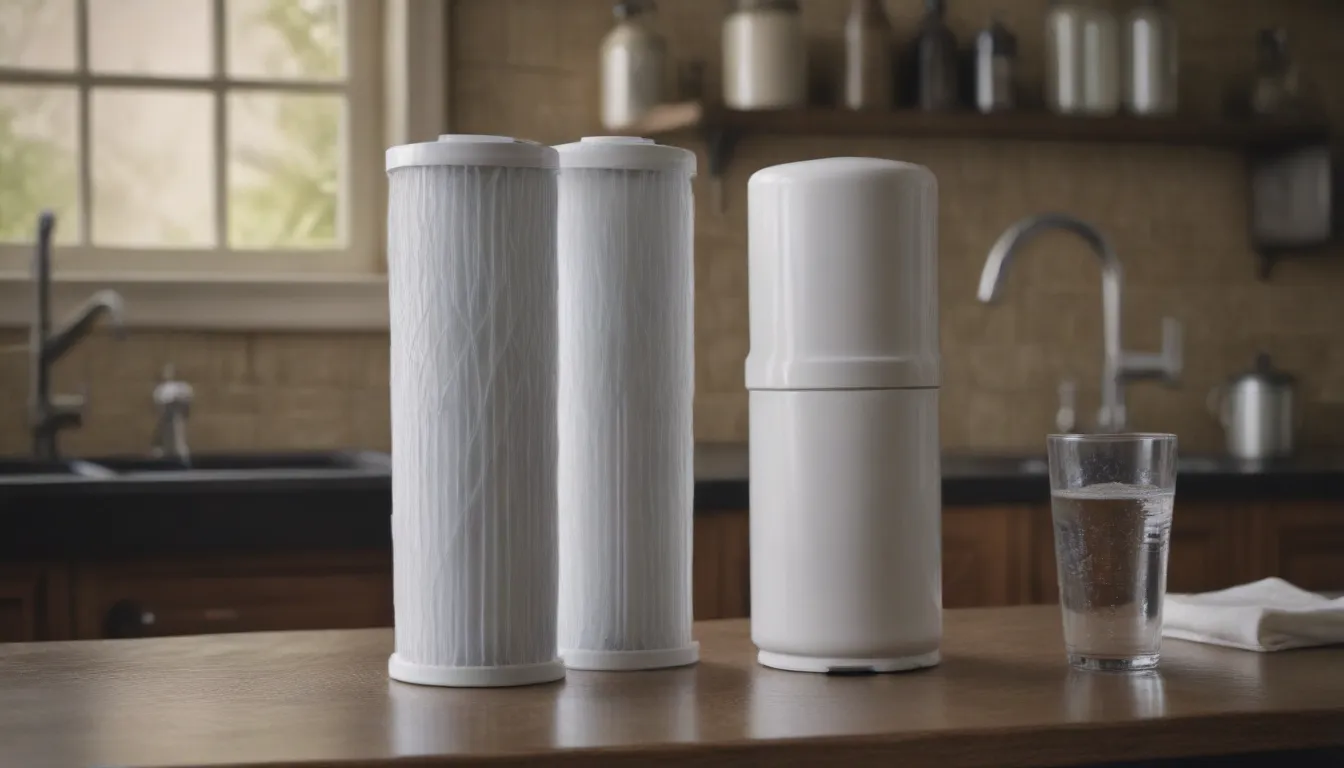How Often Should You Change Your Whole Home Water Filters?

Are you wondering how often you should change the filters in your whole home water filtration system? It’s essential to regularly replace the filters in your system to ensure that your water is safe and free from contaminants. In this article, we’ll explore the different types of filters in a whole home water filtration system and provide guidance on how often they should be replaced.
Understanding Whole Home Water Filtration Systems
A whole home water filtration system is a comprehensive water treatment solution that is installed at the point where the main water line enters your house. This system treats all the water that flows into your home, removing impurities such as chlorine, heavy metals, and other contaminants. It is important to note that residential whole home water filtration systems are designed to treat municipal water that has already been treated, not well water. However, these systems can be adapted to treat well water as well.
Types of Filters in a Whole Home Water Filtration System
Whole home water filtration systems consist of various types of filters that perform different functions. It’s important to understand the role of each filter and how often they need to be replaced:
Sediment Pre-Filter
The sediment pre-filter is the most common filter in a whole home water filtration system. This filter is the first line of defense as water enters your home, trapping dirt and debris as small as five microns. It is recommended to replace the sediment pre-filter every three to six months, depending on usage.
Post-Filter
The post-filter is an optional feature in some whole house water filtration systems. This filter further traps sediment and organic particles that may have passed through the pre-filter. It is recommended to replace the post-filter every six to 12 months.
Filtration Tanks
The filtration tanks are the core of the whole house filtration system. These tanks need to be replaced every five to 10 years or after filtering between 600,000 and 1,000,000 gallons of water. The tanks reduce chlorine, chloramine, heavy metals, pesticides, herbicides, and VOCs in your water.
UV Filter (Lamp)
The ultraviolet (UV) lamp in a whole home filtration system is a light source that kills viruses and bacteria in the water. This filter is optional and should be replaced when the current lamp stops working. The bulb life is estimated to be around one year.
Salt-Free Water Softener Filtration Tank
The salt-free water softener or water conditioner is an optional feature for homes with hard water that can cause scaling in appliances and plumbing systems. It is recommended to replace the salt-free water softener every six years.
Factors Affecting Filter Replacement Frequency
Various factors can affect how often you need to change the filters in your whole home water filtration system. These factors include:
- Usage: If you use a lot of water, you may need to replace the filters more frequently.
- Water Quality: If your water is particularly contaminated, you may need to change the filters more often.
- Manufacturer’s Recommendations: Follow the manufacturer’s guidelines for filter replacement to ensure optimal performance of your system.
Locating and Changing Your Whole Home Water Filter
Your whole home water filtration system is typically located on the cold municipal water intake pipe near the main water shut-off valve in your home. To change the filters in your system, you will need a few tools and supplies, including a replacement filter, a filter housing wrench, a bucket, towels, plumber’s silicone grease, and waterproof gloves.
How to Change Your Whole Home Water Filter
- Turn off the main water supply to your home.
- Use the filter housing wrench to remove the filter housing.
- Remove the old filter and dispose of it properly.
- Clean the filter housing and lubricate the o-rings with plumber’s silicone grease.
- Insert the new filter into the housing and tighten the housing back onto the system.
- Turn on the main water supply and check for leaks.
Tip: Wear waterproof gloves when changing your whole home water filter to protect your hands from any contaminants. Remember to wash your hands thoroughly with soap and hot water after completing the task.
In conclusion, maintaining your whole home water filtration system and replacing the filters on a regular schedule is essential to ensure the safety and quality of your drinking water. By following the manufacturer’s recommendations and monitoring the condition of your filters, you can enjoy clean and healthy water throughout your home.





